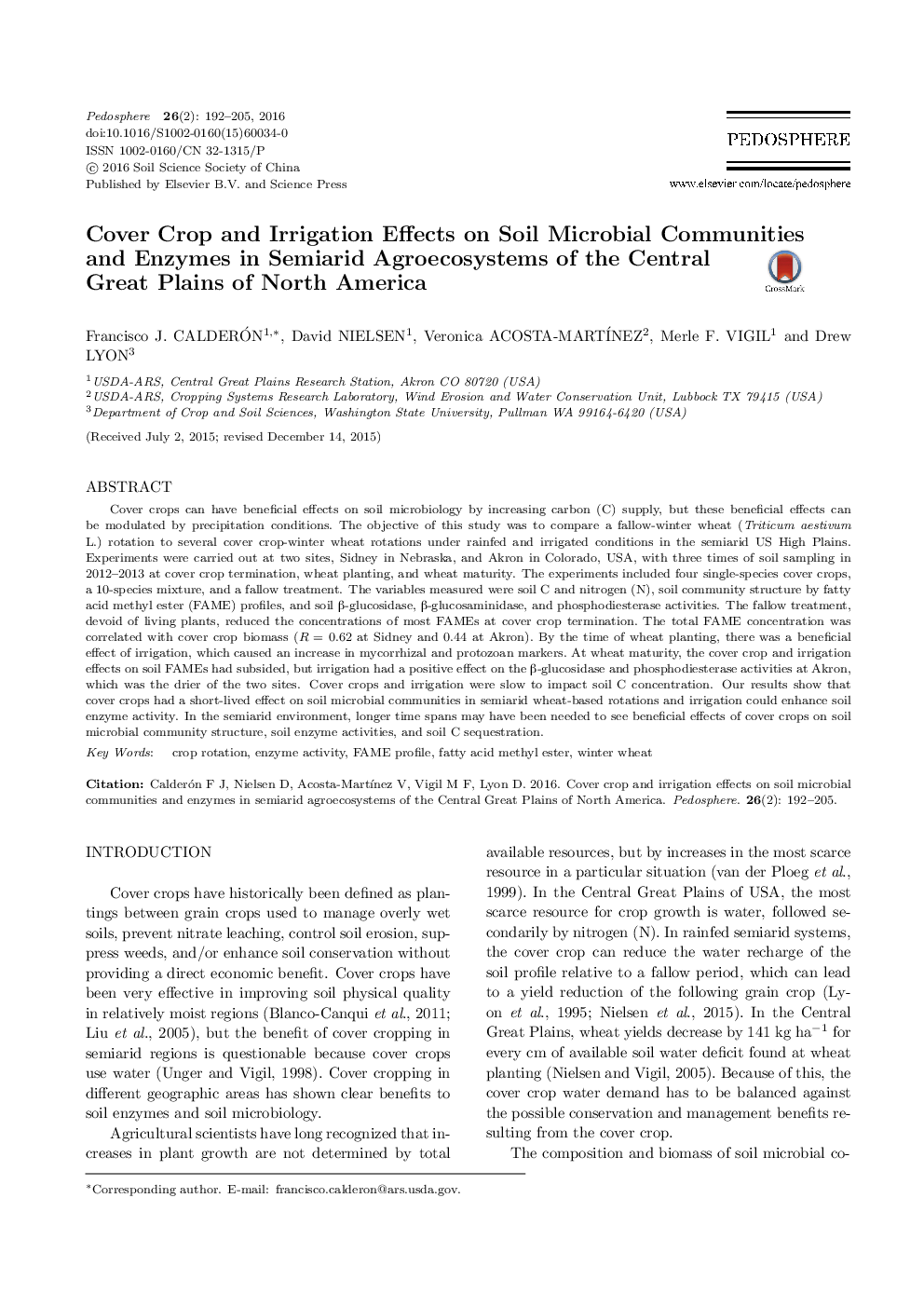| کد مقاله | کد نشریه | سال انتشار | مقاله انگلیسی | نسخه تمام متن |
|---|---|---|---|---|
| 4581126 | 1333683 | 2016 | 14 صفحه PDF | دانلود رایگان |
Cover crops can have beneficial effects on soil microbiology by increasing carbon (C) supply, but these beneficial effects can be modulated by precipitation conditions. The objective of this study was to compare a fallow-winter wheat (Triticum aestivum L.) rotation to several cover crop-winter wheat rotations under rainfed and irrigated conditions in the semiarid US High Plains. Experiments were carried out at two sites, Sidney in Nebraska, and Akron in Colorado, USA, with three times of soil sampling in 2012–2013 at cover crop termination, wheat planting, and wheat maturity. The experiments included four single-species cover crops, a 10-species mixture, and a fallow treatment. The variables measured were soil C and nitrogen (N), soil community structure by fatty acid methyl ester (FAME) profiles, and soil β-glucosidase, β-glucosaminidase, and phosphodiesterase activities. The fallow treatment, devoid of living plants, reduced the concentrations of most FAMEs at cover crop termination. The total FAME concentration was correlated with cover crop biomass (R = 0.62 at Sidney and 0.44 at Akron). By the time of wheat planting, there was a beneficial effect of irrigation, which caused an increase in mycorrhizal and protozoan markers. At wheat maturity, the cover crop and irrigation effects on soil FAMEs had subsided, but irrigation had a positive effect on the β-glucosidase and phosphodiesterase activities at Akron, which was the drier of the two sites. Cover crops and irrigation were slow to impact soil C concentration. Our results show that cover crops had a short-lived effect on soil microbial communities in semiarid wheat-based rotations and irrigation could enhance soil enzyme activity. In the semiarid environment, longer time spans may have been needed to see beneficial effects of cover crops on soil microbial community structure, soil enzyme activities, and soil C sequestration.
Journal: Pedosphere - Volume 26, Issue 2, April 2016, Pages 192-205
